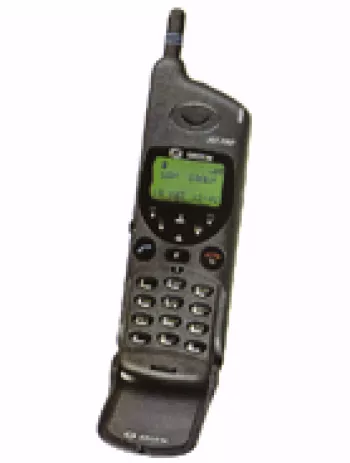
Overview of Sagem my100X
The Sagem my100X is a mobile phone that was launched in February 2006. It falls under the category of feature phones, which were prevalent before the smartphone era took over. This device was designed to cater to basic telecommunication needs, offering a simplistic and straightforward user experience.
Network and Connectivity
The Sagem my100X supports GSM technology, which was the most common mobile communication standard at that time. It operates on the 2G network with bands GSM 900 and GSM 1800. The device, however, does not support GPRS or EDGE technologies, which means it lacks basic internet connectivity capabilities. This limitation was in line with the device's primary focus on traditional voice and SMS functionalities.
Launch and Status
The Sagem my100X was announced in February 2006. At the time of its release, it was positioned as an entry-level device intended for users who needed a reliable phone for basic communication. Since then, the device has been discontinued, reflecting the rapid progression of mobile technology towards more advanced systems.
Body and Design
The phone comes with dimensions of 104 x 42 x 15.5 mm and weighs 76 grams, making it compact and lightweight. It uses a Mini-SIM card, which was standard for many devices in that era. Its design is simplified, focusing on functionality over form, with a sturdy build that was typical for phones that needed to withstand daily wear and tear.
Display
The display of the Sagem my100X is a monochrome graphics screen with a resolution of 101 x 64 pixels. While this may seem modest by today's standards, such displays were adequate for the limited applications available on feature phones, primarily focusing on clarity for text-based interactions.
Memory
The phone does not support external memory cards, which is indicative of its design for basic communication rather than multimedia storage. The phonebook can hold up to 100 entries, and there is a call records feature that retains a list of the last 20 dialed numbers—sufficient for the average user's needs during that period.
Sound and Alerts
Sound functionalities include a loudspeaker and support for polyphonic ringtones with up to 8 chords. The device can also create custom ringtones with its composer feature. However, it does not have a 3.5mm audio jack, which limits it from direct headphone connections. The alert types include vibration, providing a practical option for discreet notifications.
Communication Features
In terms of communication, the Sagem my100X is primarily focused on SMS capabilities. There is no support for internet browsers, WLAN, Bluetooth, positioning services, or radio. The absence of Java means it does not support Java-based applications that were sometimes available for more advanced feature phones. The phone does come with one embedded game, offering basic entertainment.
Battery Life
The phone is powered by a removable Li-Ion 720 mAh battery. The standby time is up to 255 hours, and it offers up to 3 hours and 50 minutes of talk time. This battery performance is indicative of the low-energy demands of feature phones, allowing for longer intervals between charges compared to modern smartphones.
Conclusion
The Sagem my100X serves as a glimpse into the past, reminding us of the times when mobile phones were primarily communication devices with physical keyboards and small screens. Its straightforward functionalities, long battery life, and simplicity made it an ideal choice for users who needed an uncomplicated device for basic telephony and text messaging. While the phone is discontinued and considered obsolete by modern standards, it remains a piece of mobile history that highlights the evolution of consumer electronics.
Key Features of Sagem my100X
- Lightweight design at only 76 g (2.68 oz)
- Compact dimensions: 104 x 42 x 15.5 mm
- GSM technology with 2G bands: GSM 900 / 1800
- Removable Li-Ion 720 mAh battery with up to 255h standby time
- Monochrome graphic display with a resolution of 101 x 64 pixels
- Includes a phonebook entry capacity of up to 100 entries
- Supports SMS messaging
- Embedded game for entertainment
- Features vibration and polyphonic ringtones with a composer
Disadvantages of Sagem my100X
- Does not support GPRS or EDGE for internet connectivity.
- Only supports basic GSM 900/1800 bands.
- Uses a monochrome graphics display with low resolution (101 x 64 pixels).
- No expandable memory card slot.
- Limited phonebook capacity of only 100 entries.
- Very basic call records functionality with only a 20 redial list.
- No integrated camera.
- Lacks a 3.5mm headphone jack for audio output.
- No Bluetooth, WLAN, or USB connectivity options.
- Lacks built-in positioning (GPS) and FM radio capabilities.
- No internet browser or advanced messaging capabilities beyond SMS.
- Limited gaming options with only one embedded game.
- Non-existent Java support for additional applications or features.

View Also
More Phones
All Rights Reserved +13916 Phones © Mobilawy 2025

























